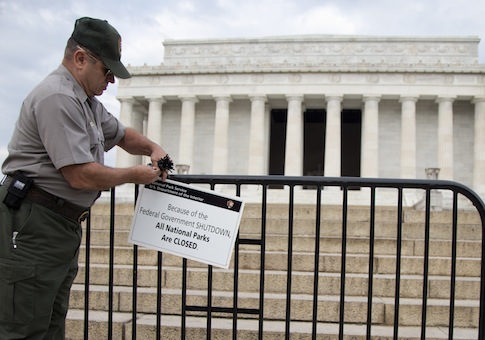The 2013 Federal Employee Viewpoint Survey (FEVS) by the Office of Personnel Management, released earlier this month, found that 49 percent of government workers said their agency allows partiality and pressure to conform to partisan politics.
Only 51 percent of respondents agreed with the statement "arbitrary action, personal favoritism, and coercion for partisan political purposes are not tolerated."
The federal government is also far from operating on a merit-based system, based on the answers to the 84-question survey.
Just 19 percent said pay raises are dependent on "how well employees perform their jobs," and 28 percent said, "steps are taken to deal with a poor performer who cannot or will not improve" in their agency.
Only 32 percent said, "Promotions in my work unit are based on merit," down two percentage points from a year ago.
Workplace awards are also not based on actual job performance, according to 38 percent of federal employees. Only 35 percent think creativity and innovation are rewarded.
According to the questionnaire, the government workforce is also not very diverse despite placing a high importance on the issue.
"The actions of the federal government—promoting an inclusive workforce offering a multitude of unique employee experiences, perspectives, and knowledge—demonstrates that it values, emphasizes, and supports diversity in the broadest sense," the survey said.
A "snapshot" of the federal workforce, however, found that only 2.7 percent of government workers are LGBT. Thirteen percent are disabled.
The survey respondents were 73 percent white, 16 percent black, and 5 percent Asian.
"Why Is It Important to Examine Diversity?" the OPM asks. "Hiring initiatives, executive orders, court rulings, and the press have recently put veterans, the LGBT community, and people with disabilities in the spotlight. As a result there is an increasing need to better understand these three diversity groups."
Of the 2.7 percent that are LGBT, a third are between the ages of 50 and 59, and the highest percentage have worked for the government for more than 20 years (29 percent).
Only 2 percent are 25 or younger and only 2 percent were hired within the last year.
The FEVs started asking government workers about their sexual orientation in 2012 because the diversity "lens" has been expanded in recent years, the OPM said, with a heightened focus on LGBT, people with disabilities, and veterans.
The results were based on responses from 376,577 federal workers, spanning across over 80 different agencies. Overall, 35 percent have been employed by the government for over 20 years, and 68 percent have no plans to leave.
A growing number of employees are working from home. Government-wide, 27 percent participate in "telework," the survey said.
The OPM cited the Department of Agriculture as being successful in getting more of its employees to stay home, crediting a "Let’s talk telework" webinar they held. The agency has increased the number of workers eligible to telecommute by 13 percent since 2012.
The survey has been conducted every year since 2002, as a tool for "gathering information, empowering employees, and inspiring change."
But not many federal workers think the survey is useful. Only 38 percent said, "I believe the results of this survey will be used to make my agency a better place to work."
